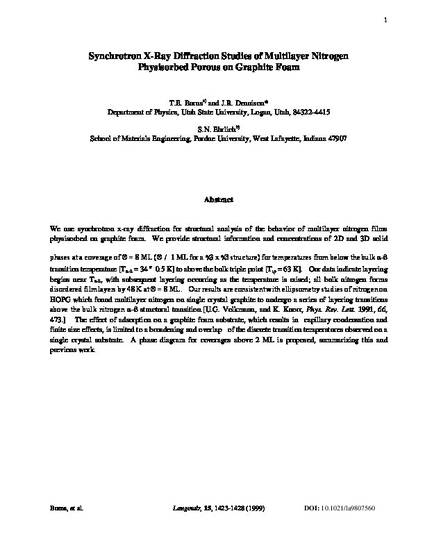
We use synchrotron x-ray diffraction for structural analysis of the behavior of multilayer nitrogen films physisorbed on graphite foam. We provide structural information and concentrations of 2D and 3D solid phases at a coverage of Θ = 8 ML (Θ / 1 ML for a %3 x %3 structure) for temperatures from below the bulk α-ß transition temperature [Tα-ß = 34 " 0.5 K] to above the bulk triple point [Ttp = 63 K]. Our data indicate layering begins near Tα-ß, with subsequent layering occurring as the temperature is raised; all bulk nitrogen forms disordered film layers by 48 K at Θ = 8 ML. Our results are consistent with ellipsometry studies of nitrogen on HOPG which found multilayer nitrogen on single crystal graphite to undergo a series of layering transitions above the bulk nitrogen α-ß structural transition.[U.G. Volkmann, and K. Knorr, Phys. Rev. Lett. 1991, 66, 473.] The effect of adsorption on a graphite foam substrate, which results in capillary condensation and finite size effects, is limited to a broadening and overlap of the discrete transition temperatures observed on a single crystal substrate. A phase diagram for coverages above 2 ML is proposed, summarizing this and previous work.
